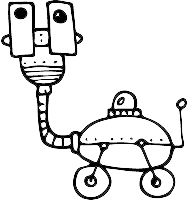Workflows: Frequently Asked Questions
Below you’ll find information about edge cases which happen when you change something in your workflows.
What if I change a workflow trigger, or remove it?
If a user has already entered that workflow, they will stay inside and continue (or start) receiving messages as planned — even if the new trigger isn’t true for them any more.
Can there be a delay between the trigger event, and the first email being sent?
You can set a time-based delay on the first message of a workflow. The workflow will be started at the time of the trigger event, but the first message will only be sent after the delay.
What if I reorder messages in an active workflow?
When you reorder messages in a workflow that’s already been running for a while, a list of users queued up for a message is moved — up or down — with the message itself. The system will skip messages that have already been sent to a specific user, so the same message will never be sent to a user twice. That’s because each message has a unique ID, which won’t change even if you shuffle messages around or update the message text.
What if I add a new message to an active workflow?
Everyone who’s before (above) it in the workflow will receive your new message, as planned. Users who have already advanced past that point in the workflow will not receive your new message.
Will my new workflow send to users who already belong to a segment?
When you create a new workflow based on “joined a segment” event, this workflow will not trigger for users who already belong to that segment.
If you want to retrospectively message users who already belong to that segment, we recommend to add a second trigger with “user matches condition” trigger, and include “user belongs to segment” there. You can later remove this second trigger.
What if I create a new segment?
Such event will show as “joined a segment” in the user’s timeline. However, it won’t trigger any workflows, because none will relate to that brand new segment yet.
What if I delete a segment?
Nothing will happen — such event won’t show in the user’s timeline. We also won’t trigger any workflows based on that (even if these workflows are set up for “left a segment”). Users from a deleted segment won’t receive any messages from such workflows.
What if I change conditions for a segment?
Users who now match these new conditions will join that segment, which will trigger any existing workflows as a result. These users will start receiving messages from such workflows. Users who no longer match the conditions will leave the segment, and activate corresponding “left a segment” triggers and goals.
What if I rename a segment?
Nothing will change in the workflows; the segment name will update automatically across the app. Timeline entries will keep the previous name, though.
